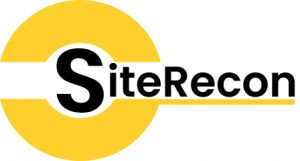
A Planning Exercise
Steven Cesare, Ph.D.
A business owner from Maryland called me the other day to talk about his company’s imminent strategic planning meeting, involving key office staff, Account Managers, and Field Supervisors. While such meetings are traditionally framed by five-year plans that are never reviewed once they are developed, discussed within a groupthink mindset bereft of a sincere business model, and attended by self-indulgent executives lacking representative consideration for front-line employees, they are still uniformly treated with Mosaic-like reverence as if the “strategic plan” was divinely printed on stone tablets.
Not a fan.
In its place, I believe the planning session should be conducted within the boundaries of the Balanced Scorecard, replete with empirical goals predicated on a rolling three-year average, and viewed across a continuous 18-month horizon date. With the foundation established, the development of key initiatives (i.e., practices to achieve the agreed-upon Balanced Scorecard goals) should involve a cross section of Field Supervisors, Account Managers, and office staff (e.g., Sales, Human Resources, Information Technology, Accounting).
Diagrammatically, the four Balanced Scorecard quadrants should be cross-referenced with the inherent structure of the Start-Stop-Keep method of performance coaching.

The format of the meeting is premised upon differential perspectives offered by the three groups of attendees (e.g., office staff, Account Managers, and Field Supervisors), each of which generates responses based on their unique understanding of the specific quadrant goal. For example, each group would independently generate 4-5 behaviors they think the company should:
- “Start” doing (e.g., to accomplish the goal of increasing Enhancements Revenue by 15% over the next 18 months), or
- “Stop” doing (e.g., that are preventing the annual goal of 85% Foremen retention from being achieved), or
- “Keep” doing (e.g., that will help attain the Gross Margin goal of 50% across the entire field operations team).
Procedurally, each of the three groups would present their respective key initiatives publicly at which time, the entire session would review, discuss, and consider each group’s offerings. To be specific, all three groups would share their information regarding the Start Revenue section, followed by the Stop Revenue cell, and then finalized by the Keep Revenue area; to be repeated for the Employee Issues, Operations, and Customer Focus topics.
As each cell is presented and discussed, the degree of awareness, alignment, and activity across the three group perspectives will become immediately evident. That congruence or lack thereof, alone provides invaluable insight necessary to agree on the key initiatives, allocate resources, and define points of accountability; all of which will be addressed at the next monthly Financial/Operations review meeting.
By the way, when was the last time you checked to see how accurate your Company’s five-year strategic plan in 2016 predicted the results for 2021?
Are you still a fan?
Check Out Harvester Steve Cesare’s
NEW OFFERING!
Harvest Group Partners
Click the icon below to download the Harvest Group Mobile app!
What do you want to learn more about?
The Harvesters want to know what topics you would like to see us discuss. Click below to submit your ideas!





